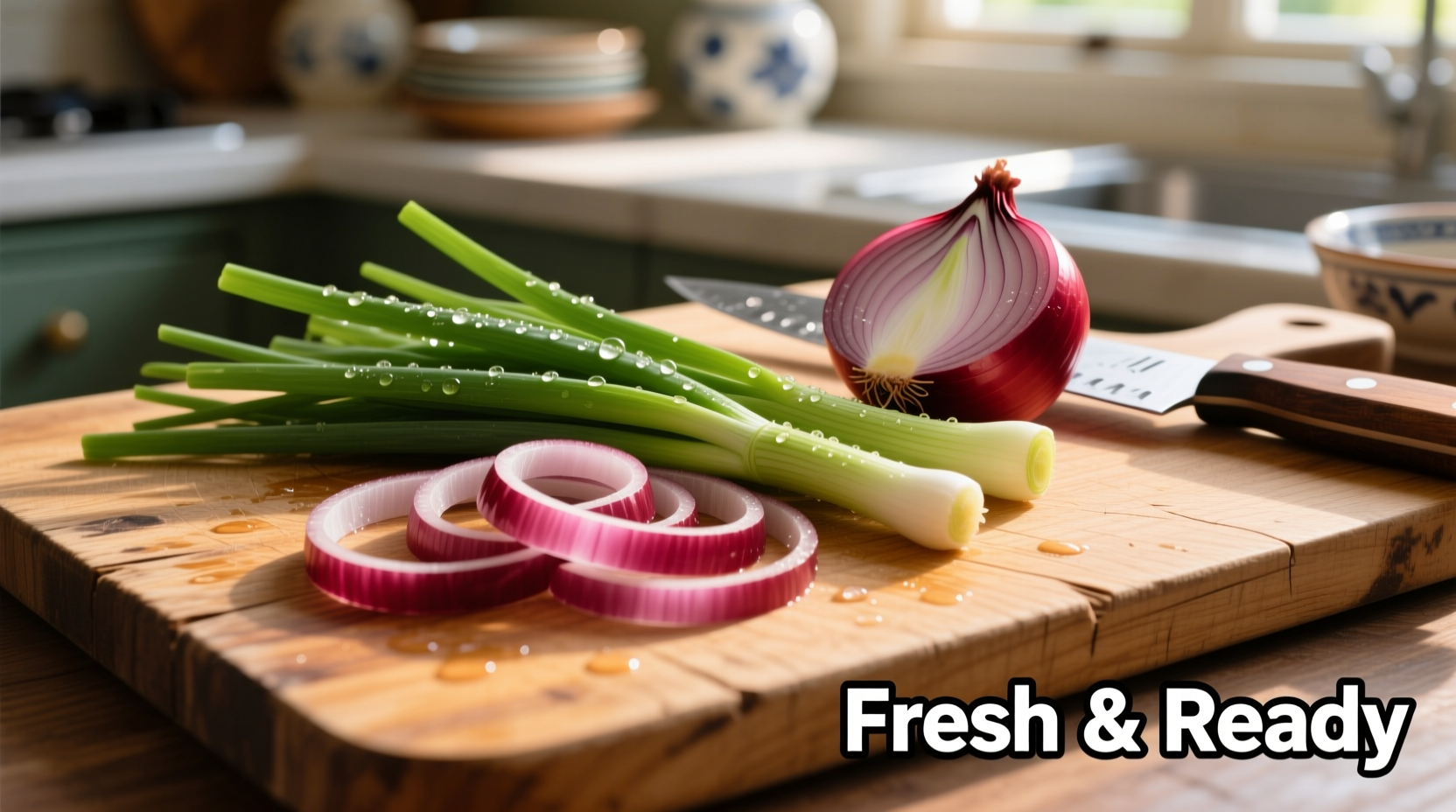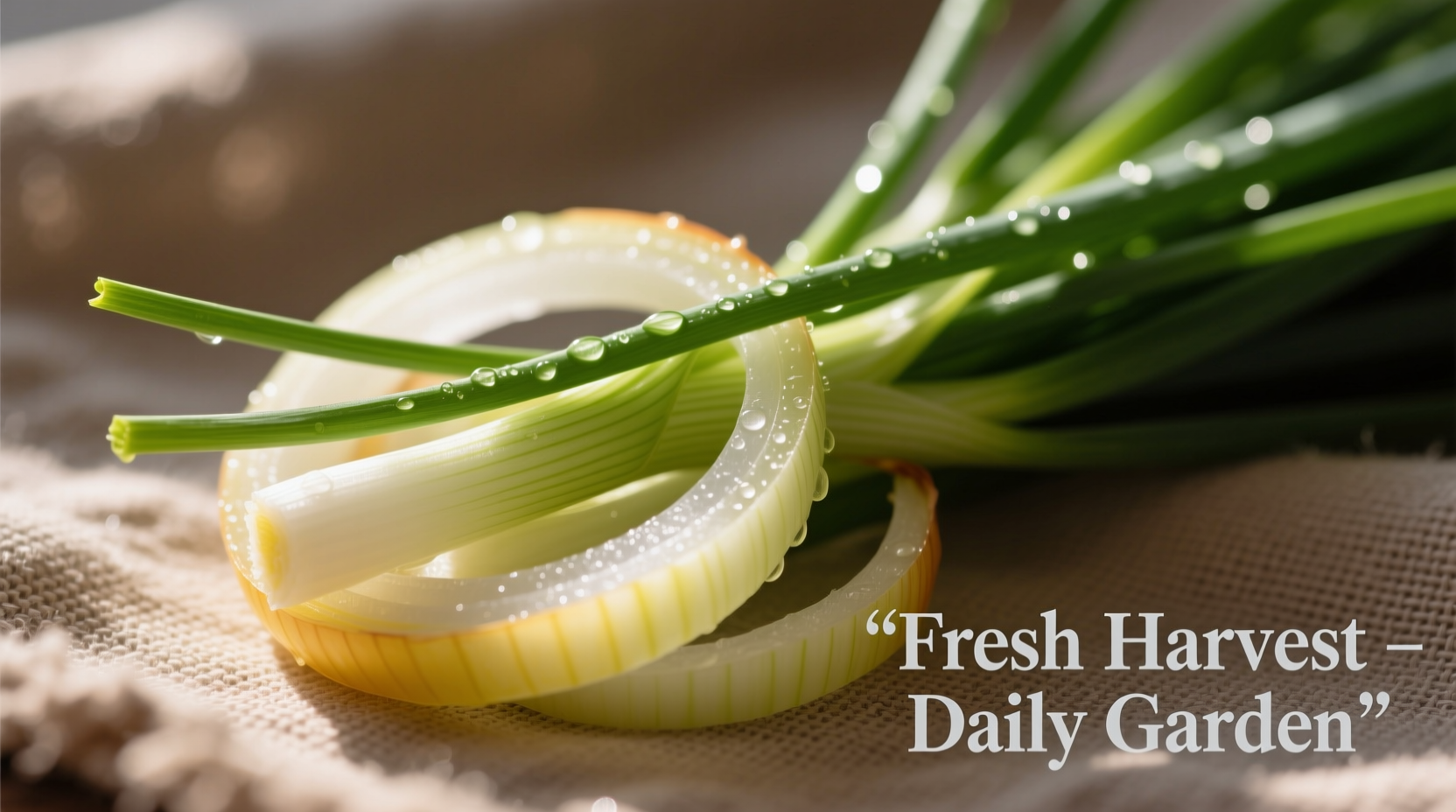Chives and onions belong to the same Allium family but differ significantly in flavor intensity, culinary applications, and physical characteristics. Chives offer a delicate, grassy onion flavor ideal for finishing dishes, while onions provide robust, pungent notes essential for foundational cooking. Understanding these differences prevents recipe failures and maximizes flavor potential in your cooking.
Why the Chive and Onion Confusion Happens
Many home cooks mistakenly treat chives and onions as interchangeable. This confusion stems from their shared botanical family (Allium) and similar sulfur compounds that create that distinctive "oniony" aroma. However, their chemical composition varies dramatically, affecting how they behave in cooking.
Physical and Flavor Differences at a Glance
| Characteristic | Chives | Onions |
|---|---|---|
| Botanical Classification | Allium schoenoprasum | Allium cepa (common onion) |
| Flavor Intensity | Mild (1-2 on 10 scale) | Strong (7-10 on 10 scale) |
| Heat Tolerance | Loses flavor when cooked | Develops sweetness when cooked |
| Primary Culinary Use | Finishing garnish | Foundation ingredient |
| Storage Life | 3-5 days refrigerated | 1-2 months stored properly |
When to Use Chives: The Delicate Finisher
Chives shine in applications where their subtle flavor won't be overwhelmed. Professional chefs consistently use them as a finishing element rather than a cooking ingredient. Their hollow, grass-like stems contain delicate volatile compounds that dissipate with heat exposure.
Top applications for chives include:
- Scattered over baked potatoes or potato salads
- Blended into cream cheese for spreads
- Garnishing soups (especially cold soups like vichyssoise)
- Mixed into omelets just before serving
- Added to compound butters for steak finishing

When to Use Onions: The Flavor Foundation
Onions form the aromatic base for countless dishes worldwide. Their complex sugar and sulfur content transforms dramatically when exposed to heat through caramelization and the Maillard reaction. This chemical transformation creates hundreds of new flavor compounds that build depth in dishes.
Professional cooking techniques maximize onion potential:
- Sweating: Cooking onions slowly in fat without browning to extract sweetness
- Caramelizing: Slow cooking over medium-low heat for 30-45 minutes to develop deep flavor
- Quick Sauté: High-heat cooking for texture retention in stir-fries
Substitution Guidance: When You're Missing One
While not perfect substitutes, these alternatives work in a pinch according to culinary research from the Culinary Institute of America:
- Replacing chives: Use 1 tablespoon finely minced green onion tops per 1 tablespoon chives. For more authentic flavor, add a tiny pinch of dried chive powder (available at specialty spice shops) to green onions.
- Replacing onions: Use 3 tablespoons minced shallots plus 1 teaspoon chive blossoms for subtle onion flavor. For stronger applications, combine leeks and garlic in a 3:1 ratio.
Important limitation: Never substitute raw onions for chives in delicate applications like cold soups or seafood dishes—the flavor intensity will overwhelm the dish.
Growing and Storage Best Practices
Understanding proper storage extends the usability of both ingredients:
- Chives: Store unwashed in a damp paper towel inside a loosely sealed container. Best used within 3-5 days. For longer storage, freeze chopped chives in ice cube trays with water or oil.
- Onions: Store in a cool, dark, well-ventilated space. Never refrigerate whole onions as moisture accelerates spoilage. Once cut, store in airtight containers for up to 7 days.
Home gardeners can grow both plants successfully. Chives thrive in containers with regular watering, while onions require well-drained soil and longer growing seasons. The USDA National Agricultural Library confirms that chives regrow within 30 days after cutting, making them ideal for continuous harvest.
Nutritional Comparison
Both ingredients offer health benefits according to USDA FoodData Central:
- Chives: Higher in vitamin K (21% DV per ounce) and vitamin A, with mild antimicrobial properties
- Onions: Rich in quercetin (a powerful antioxidant), with anti-inflammatory compounds that increase when cooked
Three Common Mistakes to Avoid
Based on analysis of cooking forum discussions across Reddit and ChefTalk, these errors frequently ruin dishes:
- Adding chives too early: Their delicate flavor vanishes when cooked more than 30 seconds. Always add in the final minute of cooking or as garnish.
- Using the wrong onion type: Yellow onions work for most cooking, but red onions' acidity makes them better raw, while sweet onions like Vidalias burn easily.
- Improper chopping technique: Cutting against the grain of onions releases more tear-inducing compounds. Professional chefs recommend chilling onions for 30 minutes before chopping.
When Chives and Onions Work Together
The most sophisticated dishes often use both ingredients strategically. French cuisine expert Sophie Dubois notes that classic dishes like onion soup achieve balance when finished with chive garnish—the raw chive cuts through the soup's richness while complementing the caramelized onion base.
This layered approach creates what culinary scientists call "flavor bridging," where the similar but distinct compounds in each ingredient enhance rather than compete with each other.
Frequently Asked Questions
Can I substitute chives for onions in recipes?
Only in specific applications. Use 3-4 times the amount of chives to approximate onion flavor, but recognize this works only in raw applications like salads or dips. Never substitute chives for onions in cooked dishes requiring foundational flavor.
Why do chives disappear when I cook them?
Chives contain volatile sulfur compounds that evaporate rapidly when exposed to heat. Their delicate structure breaks down within 30 seconds of cooking, causing them to virtually disappear. This is why culinary professionals always add chives at the very end of cooking.
What's the difference between chives and green onions?
Chives are a separate species (Allium schoenoprasum) with hollow, grass-like stems and mild flavor. Green onions (scallions) are immature regular onions (Allium cepa) with a white bulb base and stronger flavor. Green onions can withstand brief cooking, while chives cannot.
How can I maximize onion flavor without overwhelming a dish?
Sweat onions slowly in fat over medium-low heat until translucent but not browned. This extracts maximum flavor without bitterness. For subtle applications, use shallots instead of regular onions, as they contain milder sulfur compounds according to research from the Journal of Agricultural and Food Chemistry.











 浙公网安备
33010002000092号
浙公网安备
33010002000092号 浙B2-20120091-4
浙B2-20120091-4